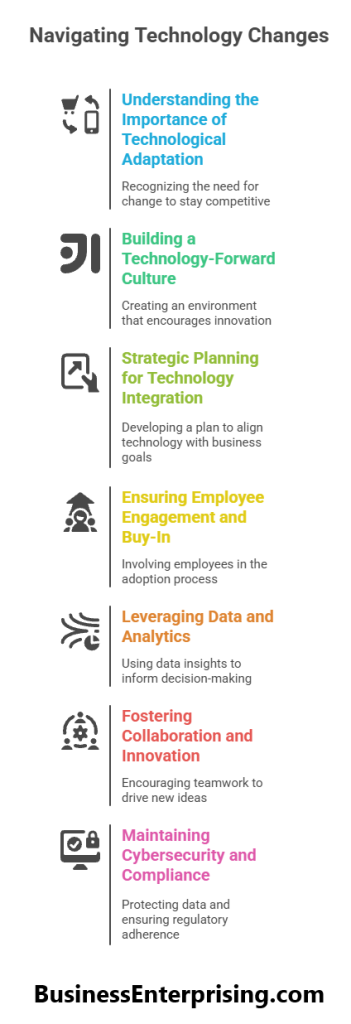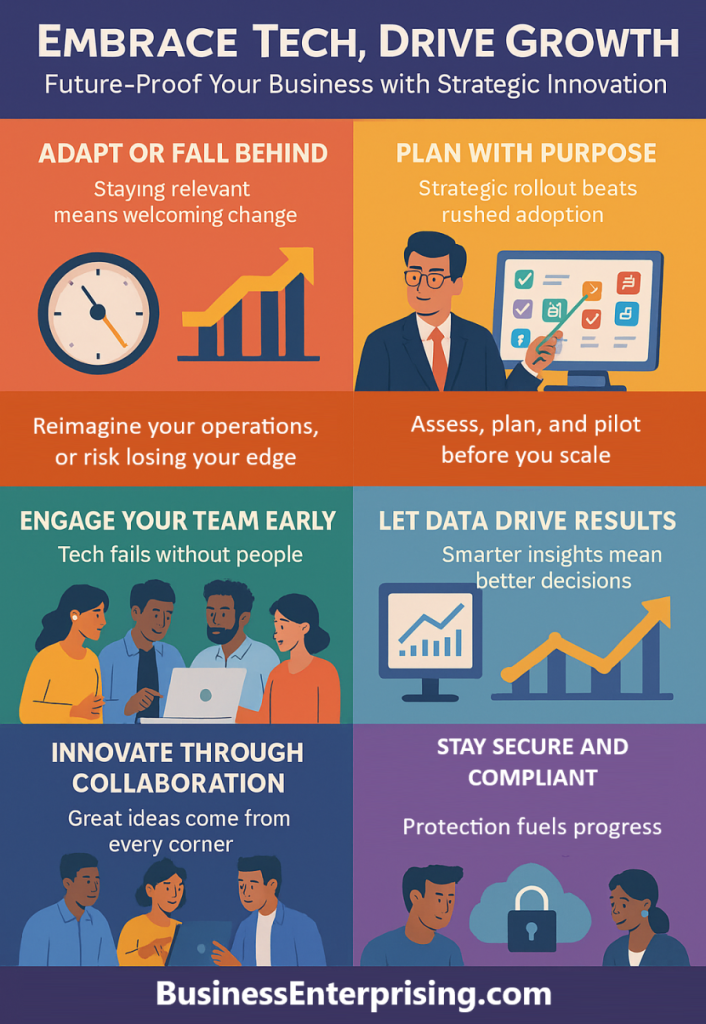
Understanding the Importance of Technological Adaptation
Adapting to technological changes is crucial for maintaining relevance in a rapidly evolving market. Companies that resist change risk falling behind their competitors and missing out on opportunities for innovation. Embracing new technologies can streamline processes, reduce costs, and improve customer experiences. For instance, automation can handle repetitive tasks more efficiently than human workers, freeing up employees to focus on higher-value activities. Similarly, data analytics can provide insights that drive informed decision-making and also uncover new business opportunities.
Moreover, technological adaptation can enhance a company’s agility and responsiveness. In a dynamic market, the ability to quickly implement and leverage new technologies can provide a significant competitive advantage. Companies that are agile can pivot their strategies, develop new products, and enter emerging markets more effectively. Therefore, embracing technology changes is essential for long-term success.
Building a Technology-Forward Culture
Creating a culture that embraces technology starts with leadership. Executives and managers must champion technological innovation and demonstrate a commitment to integrating new tools and processes. This involves not only investing in technology but also fostering an environment that encourages experimentation and learning. Leaders should communicate the benefits of technological adoption and how it aligns with the company’s strategic goals. By articulating a clear vision for technology integration, leaders can inspire confidence and buy-in from employees.
Additionally, companies should also provide opportunities for employees to develop their technological skills. Continuous learning as well as professional development programs can help employees stay current with the latest technological trends and tools. Offering training sessions, workshops, and access to online courses can empower employees to embrace new technologies confidently. Encouraging a growth mindset and rewarding innovative thinking can further reinforce a technology-forward culture.
Strategic Planning for Technology Integration
Effective technology integration requires careful planning and strategic alignment with business objectives. Companies should begin by conducting a thorough assessment of their current technological capabilities and identifying areas for improvement. This involves evaluating existing systems, processes, and workflows to determine where new technologies can add the most value. Collaborating with IT experts and consultants can provide valuable insights and help identify the best solutions for the company’s needs.
Once potential technologies are identified, companies should develop a detailed implementation plan. This plan should outline the steps required to integrate the new technology, including timelines, resource allocation, and potential challenges. Setting clear goals and milestones can help track progress and ensure that the integration stays on schedule. Additionally, companies should consider conducting pilot projects or phased rollouts to test the new technology on a smaller scale before full implementation. This approach allows for adjustments and improvements based on initial feedback and results.
Ensuring Employee Engagement and Buy-In
Employee engagement is critical for successful technology adoption. Resistance to change is a common challenge, particularly if employees are unfamiliar with the new technology or concerned about its impact on their roles. To address this, companies should involve employees in the technology selection and implementation process. Seeking input and feedback from employees can help identify potential concerns and ensure that the chosen technology meets their needs.
Effective communication is also essential for gaining employee buy-in. Companies should clearly explain the reasons for adopting the new technology, its benefits, and how it will improve workflows and productivity. Providing hands-on training and support can alleviate fears as well as build confidence in using the new tools. Additionally, establishing a support system, such as a help desk or dedicated team, can provide employees with the assistance they need during the transition.
Recognizing and celebrating early successes can further boost employee morale and demonstrate the positive impact of the new technology. Highlighting examples of how the technology has improved efficiency, reduced workloads, or enhanced customer experiences can reinforce its value and encourage widespread adoption.
Leveraging Data and Analytics
Data and analytics are powerful tools for guiding technology integration and maximizing its benefits. By leveraging data, companies can gain insights into customer behavior, operational performance, and market trends. These insights can inform decision-making and help identify opportunities for innovation and growth. Implementing advanced analytics tools can enable real-time monitoring and analysis, providing companies with the information they need to make proactive adjustments and optimize their strategies.
Moreover, data-driven decision-making can enhance the effectiveness of technology adoption. Companies can use data to evaluate the performance of new technologies, measure their impact on key metrics, and identify areas for improvement. This iterative approach ensures that technology integration is continuously refined and aligned with business goals. Additionally, data analytics can uncover hidden patterns and correlations that can drive innovation and competitive advantage.
Fostering Collaboration and Innovation
Technology adoption should be viewed as a collaborative effort that involves all levels of the organization. Encouraging cross-functional collaboration can lead to more effective technology integration and innovation. By bringing together diverse perspectives and expertise, companies can identify creative solutions and ensure that new technologies address the needs of different departments.
Creating innovation hubs or dedicated teams focused on exploring and implementing new technologies can further foster a culture of collaboration and experimentation. These teams can work on pilot projects, conduct research, and share best practices across the organization. Additionally, fostering partnerships with external stakeholders, such as technology vendors, industry experts, and academic institutions, can provide access to cutting-edge innovations and resources.
Maintaining Cybersecurity and Compliance
As companies embrace new technologies, maintaining cybersecurity and compliance becomes increasingly important. New technologies can introduce new vulnerabilities and risks that need to be managed effectively. Companies should implement robust cybersecurity measures to protect their data, systems, and networks from threats. This includes regular security assessments, employee training, and investing in advanced security tools.
Ensuring compliance with relevant regulations and standards is also critical. Companies must stay informed about regulatory changes and ensure that their technology adoption practices align with legal requirements. Working with legal and compliance experts can help navigate the complexities of regulatory compliance and mitigate potential risks.
Conclusion
Embracing technology changes is essential for companies to stay competitive and drive long-term success. By fostering a technology-forward culture, strategically planning for technology integration, ensuring employee engagement, leveraging data and analytics, fostering collaboration and innovation, and maintaining cybersecurity and compliance, companies can effectively navigate the complexities of technological adoption.
Ultimately, the ability to adapt to and embrace technological advancements is not just a necessity but a critical driver of growth and innovation. Companies that are proactively embracing technology changes can enhance their operations, deliver better customer experiences, and create a sustainable competitive advantage. As technology continues to evolve, staying agile and open to change will remain key to achieving business success in the modern digital landscape.


